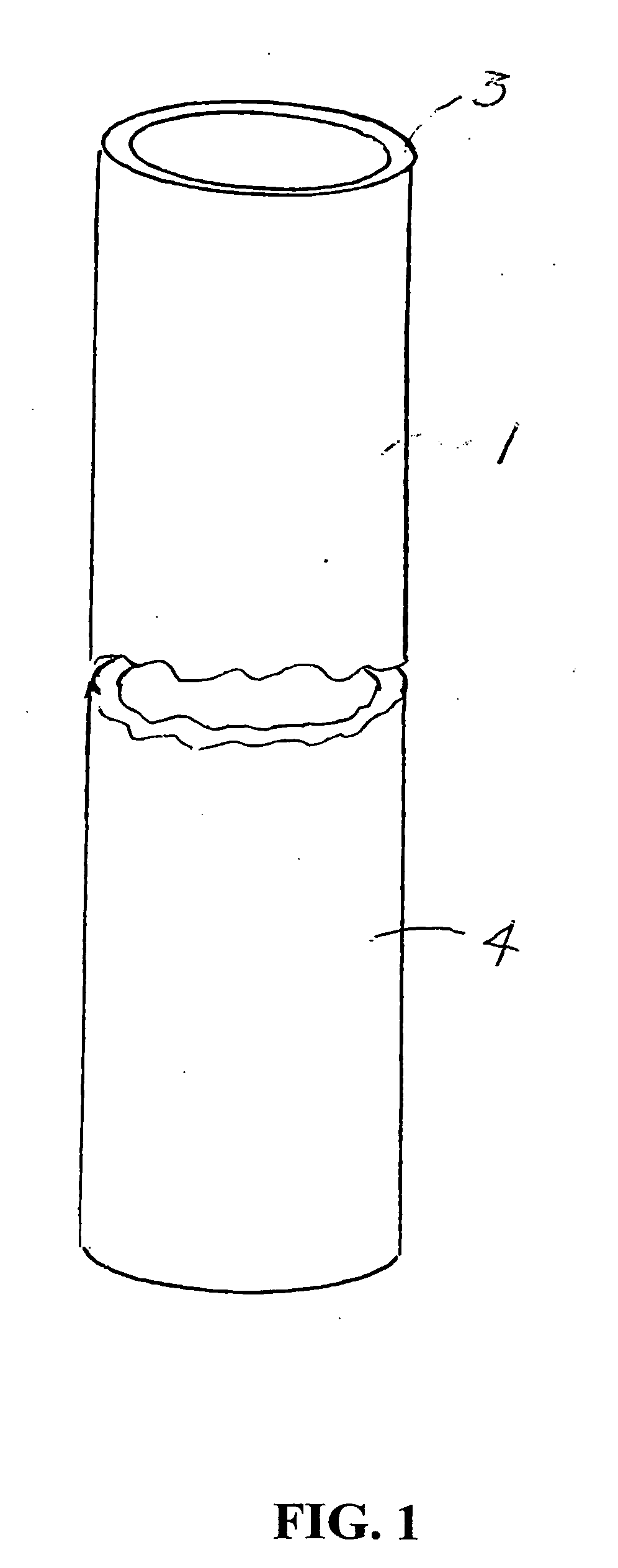Artificial gills for deep diving without incurring the bends and for scavenging O2 from and dispelling CO2 into water or thin air
- Summary
- Abstract
- Description
- Claims
- Application Information
AI Technical Summary
Benefits of technology
Problems solved by technology
Method used
Image
Examples
Embodiment Construction
[0053]Certain terminology will be used in the following description for convenience in reference only and will not be limiting. The words “upwardly”, “downwardly”, “rightwardly” and “leftwardly” will refer to directions in the drawings to which reference is made. The words “inwardly” and “outwardly” will refer to directions toward and away from, respectively, the geometric center of the device and associated parts thereof. Said terminology will include the words above specifically mentioned, derivatives thereof and words of similar import.
[0054]Referring to the large internal diameter, about 300 microns, hollow fiber 1, with about 50 microns thick walls, in FIG. 1, the potted 2 and sliced end 3 single fiber in FIG. 2 and the exploded view of FIG. 3, there is indicated generally by numeral 10 in FIG. 4 a preferred embodiment of the invention, namely a single module artificial gill or paracorporeal artificial lung containing 1-5 square meters of membrane. It is seen to comprise a bund...
PUM
 Login to View More
Login to View More Abstract
Description
Claims
Application Information
 Login to View More
Login to View More - R&D
- Intellectual Property
- Life Sciences
- Materials
- Tech Scout
- Unparalleled Data Quality
- Higher Quality Content
- 60% Fewer Hallucinations
Browse by: Latest US Patents, China's latest patents, Technical Efficacy Thesaurus, Application Domain, Technology Topic, Popular Technical Reports.
© 2025 PatSnap. All rights reserved.Legal|Privacy policy|Modern Slavery Act Transparency Statement|Sitemap|About US| Contact US: help@patsnap.com



